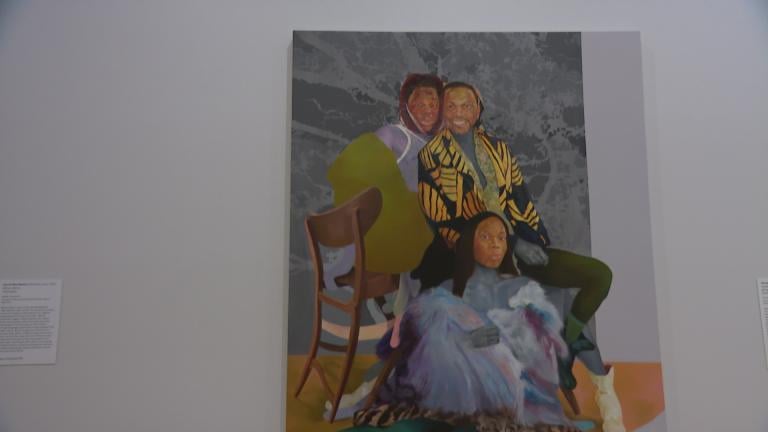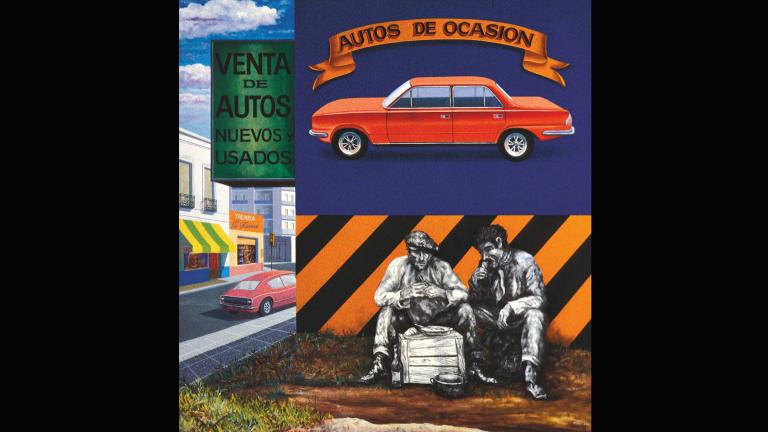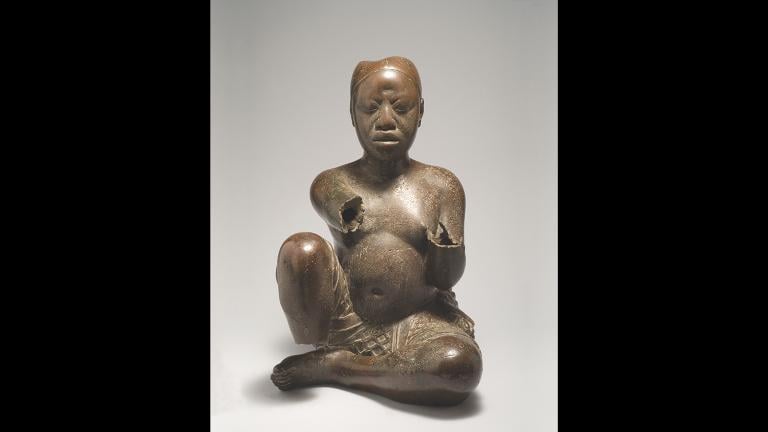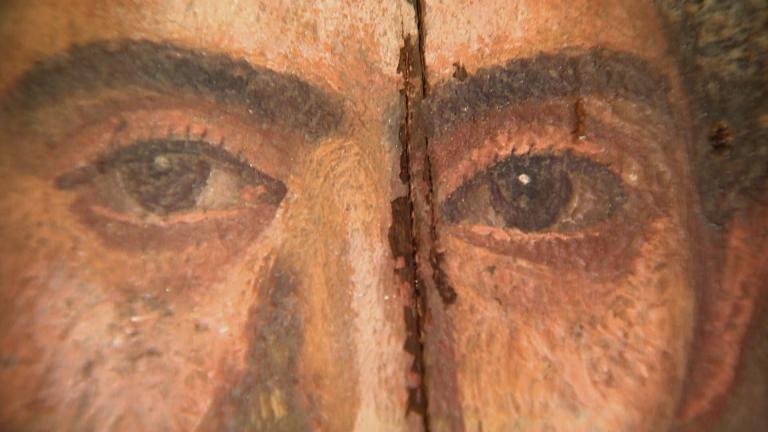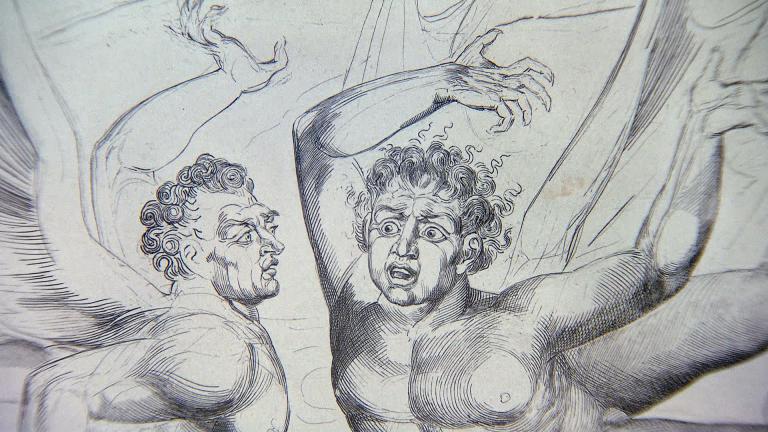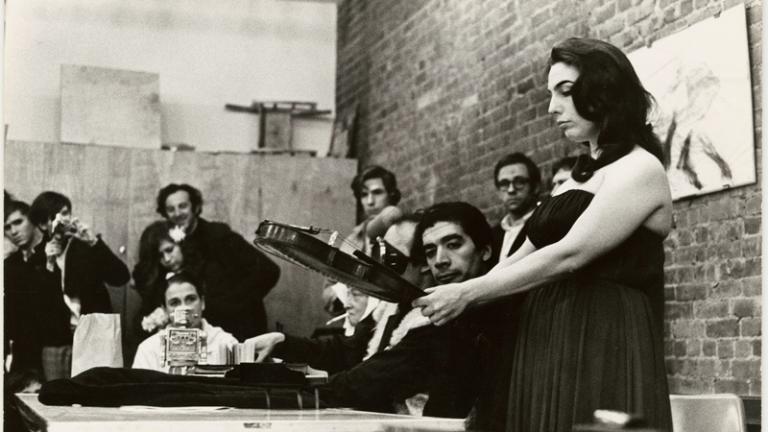When art museums don’t reflect on the past, sometimes artists do it for them.
In 1989 a group of artists called Guerrilla Girls raised the question “Do women have to be naked to get into the Met Museum?” They noted that only 5% of the artists in the museum were women, but 85% of the nudes were female.
That poster is among the works in a new show about equity and diversity: “Who Says, Who Shows, What Counts” at the Block Museum of Art on the campus of Northwestern.
TRANSCRIPT
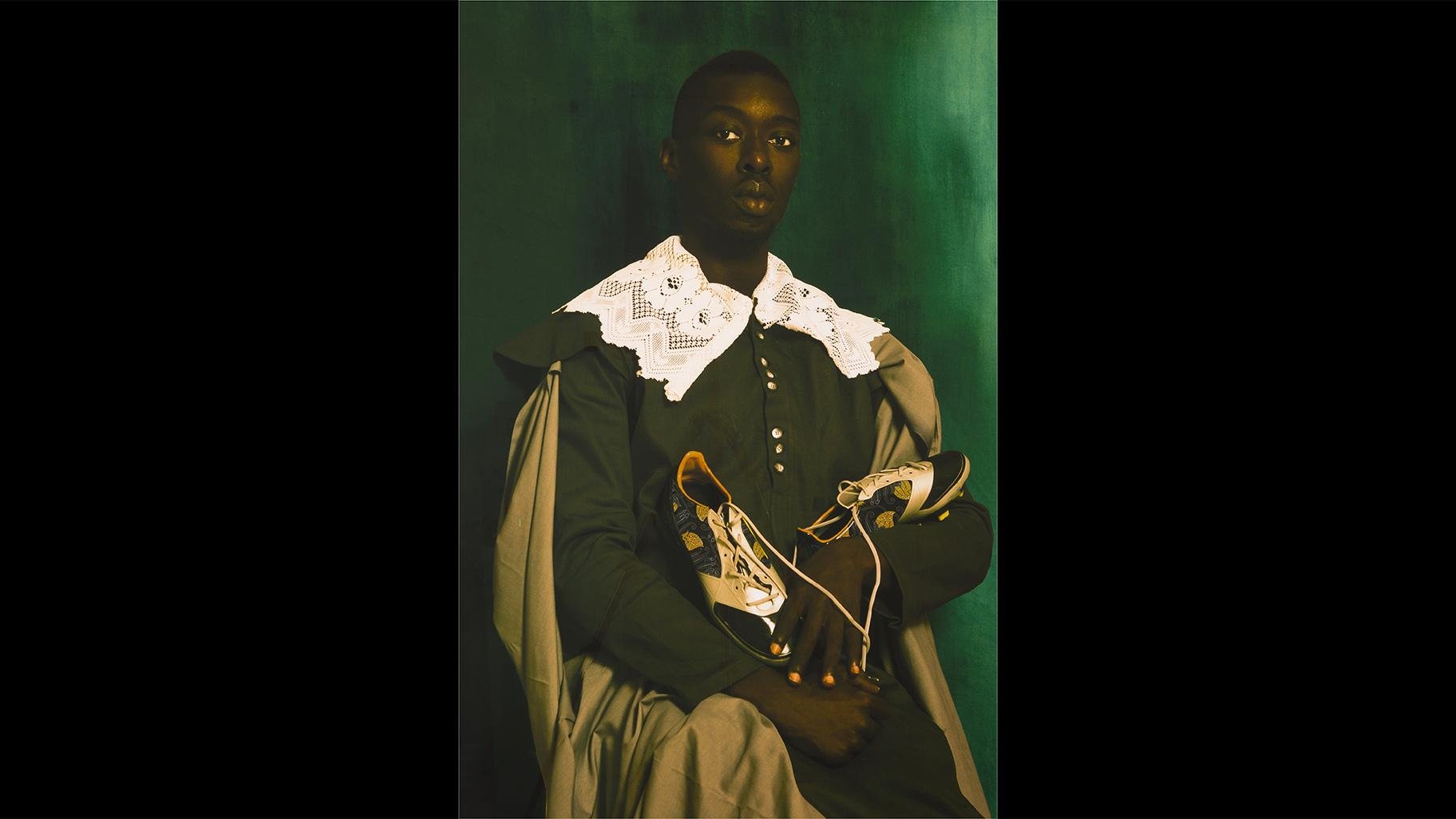 Victor Diop, Juan de Pareja, 2014. (Image courtesy of the artist and MAGNIN-A, Paris.)
Victor Diop, Juan de Pareja, 2014. (Image courtesy of the artist and MAGNIN-A, Paris.)
Kate Hadley Toftness, Block Museum of Art: “Who Says, Who Shows, What Counts” is an exhibition of contemporary art that challenges us to question and think about the past. It includes more than 80 works from around the world, all of which are new to the Block’s collection.
We’ve been doing a lot of thinking about not only what we collect but also how and why.
We wanted to look at artists using interesting strategies to help us think about the past in new ways.
Marc Vitali: Artists including Kara Walker, whose silhouettes depict racial trauma.
And Pat Phillips, whose painting “You Wanna See a Dead Body?” references both the movie “Boyz N the Hood” and Disney animation.
Artworks are grouped in four categories: Institutions, Reframing the Past, Place & Memory, and Portraiture.
Toftness: With ‘Portraiture’ we’re thinking about who’s represented in history, how and by whom. In this space we’re thinking about “Place and Memory.” How is history etched onto a landscape or erased from it?
Vitali: There are works from Tonika Lewis Johnson’s Folded Map Project, which connects residents who live at corresponding addresses on the North and South Sides of Chicago.
And a study of Miles Davis made for the Wall of Respect that once stood at 43rd Street and Langley.
![Jeff Donaldson, Study for the Wall of Respect [Miles Davis], 1967. (Image courtesy of Artist’s Estate.) Jeff Donaldson, Study for the Wall of Respect [Miles Davis], 1967. (Image courtesy of Artist’s Estate.)](/sites/default/files/styles/full/public/article/image-non-gallery/13_Block_WhoSays_Donaldson.jpg?itok=Eu7ab0Ig) Jeff Donaldson, Study for the Wall of Respect [Miles Davis], 1967. (Image courtesy of Artist’s Estate.)
Jeff Donaldson, Study for the Wall of Respect [Miles Davis], 1967. (Image courtesy of Artist’s Estate.)
International works include embroidery depicting a tragedy in South Africa.
Watercolors of civil unrest in Mexico.
And photos that document the cycle of seasons in the Jilin province of China.
Wall text was written by more than just the curators.
Toftness: We wanted to think about who was given the voice of ‘expert’ in the show. So you’ll see that all of the labels in the exhibition are written by students, faculty, alumni and staff of Northwestern, really kind of decentralizing that curatorial voice and giving it over to our community.
Vitali: Students had a voice in selecting some new acquisitions, including this one called “Quarantine Blues.”
 Leonard Suryajaya, Quarantine Blues, from the series Quarantine Blues, 2020.
Leonard Suryajaya, Quarantine Blues, from the series Quarantine Blues, 2020.
Chayda Harding, Senior, Northwestern University: It was a work created during Covid.
A lot of the students and I felt like it was reflective of a lot of our experiences but also in an interesting way of imagining and using fantasy, color and whimsy to characterize it in a new way. So we felt like it was both a marker of the history that we were all experiencing at that time — we were all online, all on Zoom, we were all quarantined — but also a reminder and a legacy of that for people to see in the future.
Toftness: Museums are always making decisions about what we collect and what we exhibit, and in that sense, we’re deciding whose stories are most valued and most visible, and we felt it was important to take time thinking about that to include more diverse perspectives in the stories that we tell.
So in this exhibition we’re pulling back the curtain a little bit to show how this work that we’re doing of collecting is intended to be more inclusive, more intentional.
“Who Says, Who Shows, What Counts” is at the Block Museum of Art on the Evanston campus of Northwestern University. It’s free and open to the public and runs through Dec. 5.

